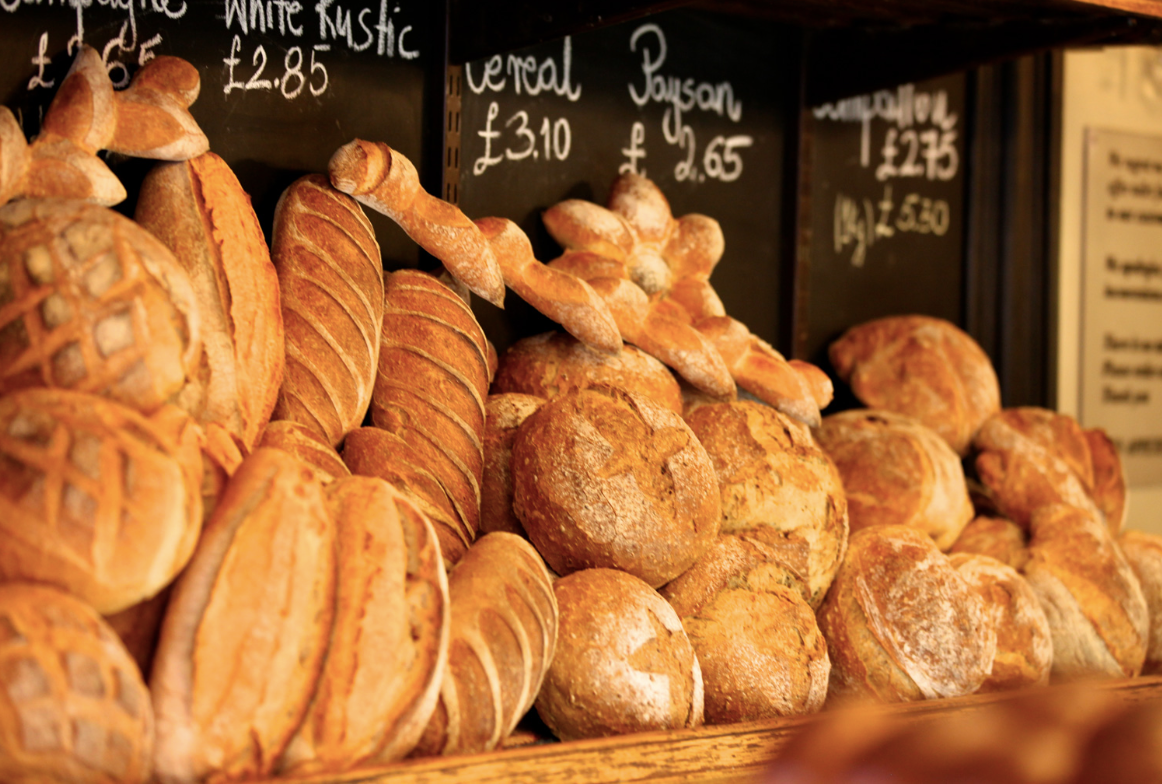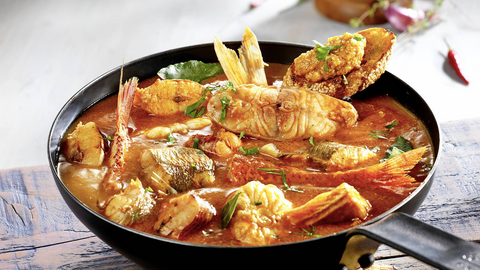The elegance and richness of French cuisine are well-known. Simple combinations of rich, natural flavors are used in French cuisine to create spectacular, world-famous dishes. French cuisine is so well-known around the world that it was added to UNESCO's list of intangible cultural heritage in 2010. People are frequently introduced to French cuisine through wine and cheese. There are many delicious pairings to choose from, from Burgundy and brie to Chardonnay and camembert. But there's a whole world of French cuisine to discover beyond the cheeseboard. Some of these have been passed down through the generations in French culture. Many people are unaware that they are eating foods prepared by French chefs all over the world.
Top 10 Most Popular Foods in France
If you want to learn more about the many various types of food that French people eat, here are some cuisines and foods to try when traveling around the country.
- Bread
You could think of a variety of pieces of bread when you think of French cuisine. From baguettes to a range of grains-céréales pains, which combine a variety of grains with a variety of seeds, there's something for everyone. One of the top breads is -Pain de Campagne.
-Pain de Campagne
Pain de Campagne is delicious sourdough bread that pairs well with a variety of dishes. Pain de Campagne (French for "country bread") is a large round loaf (Miche) produced with natural leavening or baker's yeast. Salt, whole wheat flour, water, and/or rye flour, leavening, and white flour are used in most traditional varieties of this bread. For years, residents of French towns brought their dough to be baked in public ovens, with loaves weighing anything from four to twelve pounds (1.5–5.5 kg). These huge loaves would last for weeks or days in a home until the following baking day.
Another healthy alternative is pain complet, which is prepared with whole wheat flour. Pain de Seigle is a rye bread that should be tried by everybody who enjoys rye bread.
- Pastries
In France, pastries are a popular food. Pastries, such as the pain au chocolat, are available in a wide range of flavors and varieties, and many of us consume them throughout our lives. Because there are so many pastries to choose from, it can be difficult to try them all. A crepe is one of the top pastries.
-Crêpes
Crêpes are a popular food dish in this region. They are popular as an afternoon snack and come in a variety of flavors, including Nutella, fruit jam, sugar, Chantilly, and others. Also available are éclairs, madeleines, macarons, millefeuilles, and a range of other pastries.
- Cheese
This is a religiously produced item. It is a frequently used substance that is available in over 350 different varieties. Each of these cheeses belongs to one of three families of cheese. Pressure has been applied to pressed cheeses to eliminate whey and speed up the ripening process. Comté, Cantal, Mimolette, and other well-known French pressed cheeses include. Cheeses can be classified or categorized based on their fermentation period, texture, production methods, fat content, animal milk, and provenance. Moisture content is the most prevalent and traditional tactic, which is further reduced by fat content and ripening or curing methods.
Soft cheese
“Cream cheeses do not undergo any form of the aging procedure. Soft cheeses like Brie and Neufchâtel ripen in less than a month. Neufchâtel is a soft cheese that matures for ten days before being sold.”
“Semi-soft cheese”
Semi-soft cheeses, such as Monastery cheeses, have a moderate flavor and a lot of moisture. Butterkäse, Port Salut, Munster, and Havarti are some of the most well-known kinds.
Medium-hard cheese
Swiss-style cheeses like Gruyère and Emmental have a semi-soft to firm feel. The microorganisms that give these cheeses their eyes give them their pungent and powerful scents. Gouda, Edam, Jarlsberg, Cantal, and Kashkaval/Caşcaval are some other semi-soft to hard cheeses. Because it melts quickly, this type of cheese is frequently served on toast for basic dinners or quick snacks.
Semi-hard cheese
“The moisture content of harder cheeses is lower than that of softer cheeses. They're often pressed into molds at a higher pressure and matured for longer periods than soft cheeses. Cheddar is a semi-hard to hard cheese that originated in the English village of Cheddar but is now used as a generic word for a type of cheese whose varieties are imitated all over the world and are sold by strength or age. Cheddar is a semi-hard or hard cheese made by cutting the curd, cooking it short, piling it, and mixing it before pressing it into forms (together with Cheshire and Gloucester). In Monterey Jack and Colby cheeses, which are similar but milder, the curd is rinsed before pressing to eliminate some acidity and calcium. The Dutch cheeses Gouda and Edam are made using a similar curd-washing procedure.”
Hard cheese
“Grating cheeses such as Pecorino, Parmesan, and Grana Padano have been firmly packed into huge forms and matured for years or months.”

- Soup and Potage
Traditional French potages and soups can be found all around France. There are a variety of soups available, including bisque and garbure, tourin, and others. Another popular product is potage, a thick cream soup produced by heating ingredients and then chopping or combining them. Top Types of Soups include Bisque, Garbure and Potage.
-Bisque
Bisque is a French soup cooked with a strained crab broth that is smooth, creamy, and generously seasoned. Lobsters, langoustine, crab, shrimp, or crayfish can all be used. Bisque is one of the most popular seafood soups, alongside chowder.
-Garbure
Garbure is a thick French stew prepared with ham, cheese, and stale bread. It is traditionally made with cabbage and foie gras confit, although nowadays it is most commonly made with stale bread, cheese, and ham. The term garb was originally used to describe grain sheaves shown on a coat of arms or heraldic shield. Garbure, which is eaten with a fork, is named after the pitchforks used to pick up grain sheaves as a result. Its birthplace is supposed to be Gascony, which is part of the old cultural region of Occitania. It's a lot like potée.
-Potage
“Pottage is a thick stew or soup made by boiling grains, vegetables, and, if available, meat or fish. For a long period, it was a staple food. Pottage is derived from the same Old French root as potage, a more modern dish. Pottage was frequently made with items that were readily available to peasants. It might be cooked over an open flame for several days, during which time some of it could be eaten and more ingredients added. As a result, the dinner was constantly evolving. For the majority of the 9th to 17th century in Europe, pottage was a mainstay of the poor's diet. The wealthy's pottage would include more expensive items, such as meats. These individuals ate pottage, which was similar to modern-day soups.”
- Magret de Canard
“Canard magret is a popular dish that is easy to prepare and delicious. All you need for this show-stopper is a succulent duck breast with the fat skin still attached, some roasted potatoes or fries, and a green salad on the side. This dish goes well with a glass of red wine from the Bordeaux region. This is a commodity that is difficult to come by in other locations, but is readily available in brasseries.”
“Main Ingredients:”
- The skin of a duck's breast
- A green salad with nuts and goat cheese in the future
- Sea salt fries or roasted potatoes
- Desserts
One of the many enjoyable aspects of visiting this nation is sampling the desserts. There are a lot of options to pick from. The moelleux au Chocolat is a perfectly baked chocolate cake. Mousse au chocolat is a creamier chocolate mousse that is perfect for chocolate fans. The crème brûlée and baba au rhum (rum cake) are two of the most popular desserts. Top types of desserts include Baba au rhum, Crème brûlée and Millefeuille.
-Baba au rhum
“A rum baba is a little yeast cake soaked in rum syrup and occasionally filled with pastry cream or whipped cream. Individual servings (about a 5 cm tall, slightly tapered cylinder) are the most popular, but larger shapes, similar to Bundt cakes, are also possible. Butter, milk, and eggs are all used in the baba batter.”
-Crème brûlée
Crème brûlée is a creamy custard dish with a coating of crisp caramelized sugar on top, sometimes known as trinity cream or burnt cream and substantially equivalent to the original crema Catalana. It's usually served chilled since the heat from the caramelizing process heats the top of the custard while keeping the middle cold. In French cuisine, the custard base is commonly flavored with vanilla, but it can also be flavored with other flavors. Fruit is occasionally used as a garnish.
-Millefeuille
The mille-feuille is a pastry with an unknown origin. It is also known as Napoleon, vanilla slice, and custard slice. Marie-Antoine Carême's improvements influenced its current shape. To produce a mille-feuille, three layers of puff pastry (pâte feuilletée) are sandwiched between two layers of pastry cream (crème pâtissière). The top pastry layer is dusted with chocolate, sliced almonds, pastry crumbs, or icing sugar on some occasions, while whipped cream is used on others. It can also be marbled by alternating brown and white (chocolate) icing stripes and combed.
- Salads
Salads are typically both delicious and nutritious in France. Different varieties of leaves and components are used in different parts of the country and towns. In a salad, leaves may or may not be present. Pepper, garlic, olive oil, salt and lemon juice, and a variety of other flavors will be used in the dressing, depending on regional preferences.
“Popular Salad Add-Ins:”
- “Seafood”
- “Meat”
- “Fruit”
- “Vegetables”
- “Seafood”
Many people in our country enjoy fish and fish items. Because we are so close to the Atlantic Ocean, we have some of the best and freshest crevettes grises (brown shrimp) on the planet. The larger ones, on the other hand, are commonly imported from Asia. In this country, raw oysters are also quite popular and continue to be a popular restaurant dish. Lobster, like crabs and fish, is a versatile item that may be utilized in a wide range of cuisines. In local restaurants, seafood is frequently served as an appetizer or main course for lunch and dinner.
“Main ingredients:”
- “Raw oysters”
- “Crevettes grises (Atlantic gray shrimp)”
- “Lobsters”
- “Crabs”
- “Fish”
- “Raclettes”
Because it can be prepared largely while eating, this is one of the most popular recipes. All you'll need is raclette Fromage (raclette cheese), boiled potatoes from your pressure cooker, and your favorite toppings. The Fromage is melted onto the potatoes in raclette frying pans before the other ingredients are added. Pickles, ham, and onions are popular choices.
“Materials Needed:”
- “Pressure cooker”
- “Raclette cooking pan”
- “Potatoes”
- “Raclette fromage”
- “Raw ham”
- “Onions, pickles, and other desired condiments”
- “Omelettes”
A large omelet prepared with roughly 15,000 fresh eggs is cooked every year as part of a Napoleonic festival in Bessieres. According to history, Napoleon was so taken by a local chef's omelet that he had a massive omelet made for his entire army. This ritual is one of the reasons why many French people still enjoy omelets. Two common add-ins for this product are girolles (mushrooms) and jambon gruyère (ham with gruyère). However, you will usually have a large number of options to pick from when it comes to add-ons.
“Main ingredients:”
- “Eggs”
- “Milk”
- “Salt and Pepper”
- “Your choice of add-ins”




